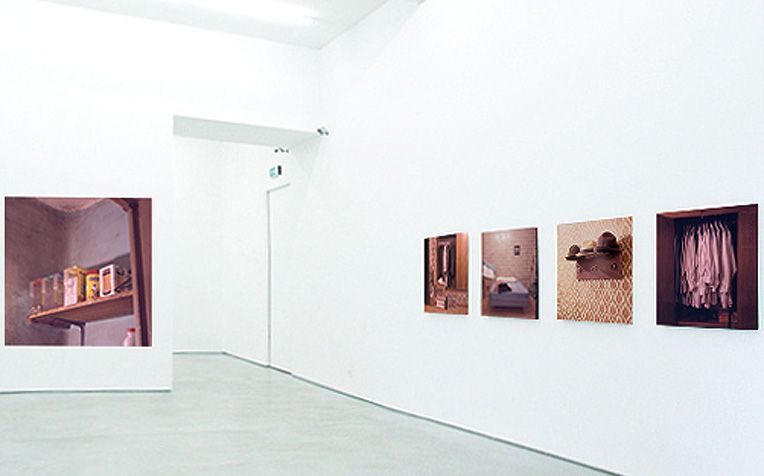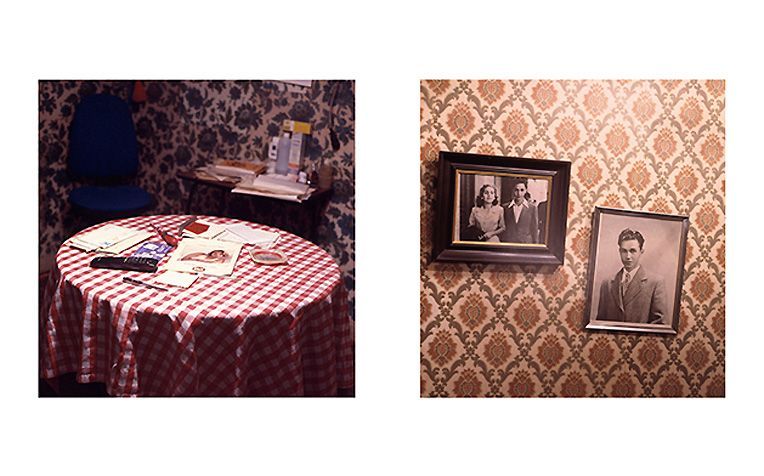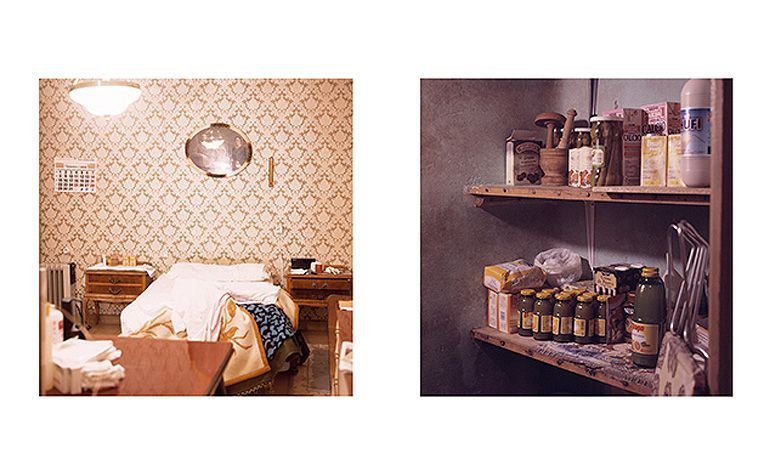



THE ABSENCE
Michael Najjar
In the film by Jean Cocteau with the same title, Orpheum steps in the empire of the dead, while real life goes through a wardrobe and enters in the Hades. In the series “the absence”, by Carlos Cid, we occupy with our eyes, spaces that indicate delicately that the inhabitant has passed recently in the same way through the mirror. The mirror is in this case, the photography itself.
Carlos Cid undertakes in his pictures, a meticulous storage of trails, that the observer follows with the eye of the camera through empty spaces, abandoned, passing by chairs, tables, beds, open wardrobes, hungers and old black and white pictures. The photography itself turns into a print.
Roland Barthes formulates in his book Camera Lucida: “in each act of reading a photography a connection with something that is not there anymore is implied. That is to say, death”.
We see an empty room, the sheets are uncovered and folded over the light blue mattress. On the left hand side there is a removal box and on the right hand side a ladder against the wall. A transit space towards another World. Above the bed there is a black and white portrait of a youngster. An old candelabra expands an strident light. All over the walls, upholstered with floral motives, there are photos hanging that show a decrepit light, the one that once was on the negative. Old lamps are hanging from the ceilings, diffusing the light that was once part of the people who inhabited the spaces. A light switch transforms itself into a metaphor for life and death.
Compositions, a frame inside the frame, show the present and absent dead at the same time. The image of the dead becomes a drill, a photographic “memento mori”. Since the Invention of photography as a medium we try to capture spaces and their memory through representations, the flow of oblivion. The eternal attempt to save the photography from tempus fugit is visualised in a very conscious manner in Carlos Cid’s work. Photos tackle the finite nature of life and represent the course of time passing by. The strange feeling of time having stopped remains, but at the same time continues to pass by vertiginously.
The intensity of the images is created by the fact that the photography symbolises the death of what is represented. And as in Cid’s work death and life are already represented the effect gets duplicated. The intensity of emptiness emanates from the images. This is the sign and print of disappearance. The images, give the viewer the feeling, that there was once something, of which the photography is a print. In the photos the past and lost get unified into an individual story from which emerges an identity- an elixir of life. The touchable and insistent absence, nearly tangible is the message “sans code”, the objects left behind are, on the contrary, the message connoté.
Carlos Cid manages something extraordinary, transfers the implicit death to each one of the universal photos, to the conscience of our own death. And at the end of each search of prints we get to the same ending- to ourselves. Cid’s photographies swing between poetry and austerity, loneliness and hope for a life that, after crossing the mirror, leaves more things behind than a couple of empty hangers.